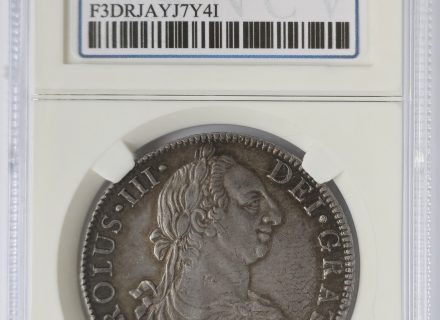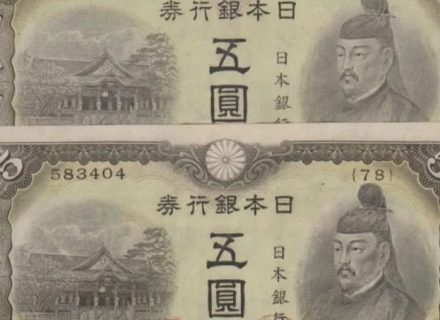Unveiling the Majesty: The Gold Sovereign Coin
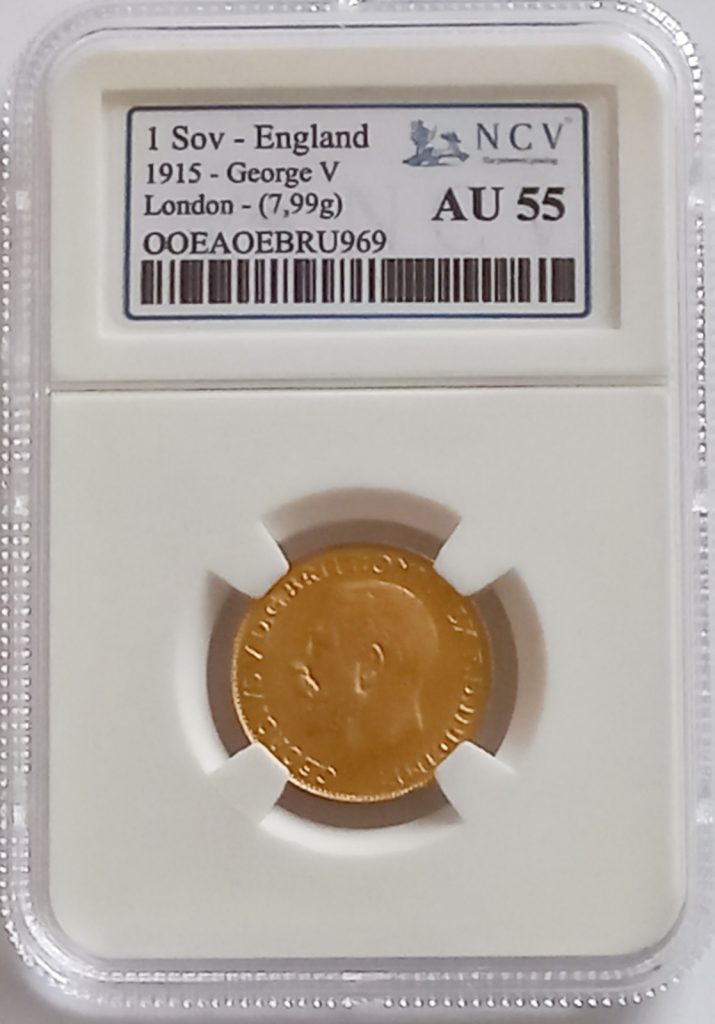
Get ready to dive into the fascinating world of one of the most renowned gold coins ever – the Sovereign coin! If we had to choose the Royal Mint’s most emblematic coin, the Sovereign, with a history spanning more than 500 years, would probably be the first nominee. This treasure of the United Kingdom is coveted by investors and collectors alike.
Are you one of them?
In any case, today’s post will take you on a fascinating journey from the coin’s inception to the present day.
Some aspects of the coveted coin will surely surprise you.
History
The Sovereign was originally a circulating coin that was accepted in Britain and elsewhere in the world. However, it is no longer in circulation. Today, it is primarily an investing and collecting coin and is sometimes mounted in jewellery. It is struck by The Royal Mint purely as an investment bullion coin. Despite this, it is still considered legal tender in the United Kingdom.
In the year 1489, under the rule of King Henry VII, the Sovereign made its grand debut. This gold-hammered coin was not just a currency but a symbol of majesty and wealth. Its size was imposing, its design was majestic, and it held the distinction of being the most valuable coin ever minted in England.
In 1603, the year of the accession of King James I. The Sovereign suffered a severe setback when the monarch issued a new twenty shilling piece, appropriately named Unite, in 1604. But the Sovereign was not destined to be forgotten. In 1817, amidst the echoes of the French Revolutionary Wars and the Napoleonic Wars, the United Kingdom of Great Britain and Ireland was grappling with economic instability. In an audacious move to stabilize the pound sterling, the government launched the Great Recoinage. This marked the triumphant return of the Sovereign, reintroduced to restore balance in the realm’s currency. Thus, the Sovereign coin, a symbol of resilience and adaptability, continues its legacy in the annals of British numismatic history.
However, the Sovereign’s journey was far from over. More than a century later, in 1817, the coin made a triumphant return. In the aftermath of the Napoleonic Wars, the United Kingdom sought to reform its currency. That’s how the Sovereign was reborn, smaller in size but still unparalleled in the quality and beauty of its design.
In the modern era, 2020 marked a significant milestone for the Sovereign. It celebrated the 200th anniversary of the death of George III, the first monarch to grace the modern Sovereign. Thus, the Sovereign coin continues to be a testament to British currency’s rich and vibrant history.
In the grand tapestry of global currency, the Sovereign coin shines as a beacon of precision and artistry. It’s not just a coin but a testament to the zenith of minting craftsmanship. Today, it holds the distinguished title of being the most meticulously specified coin on the planet.
The Sovereign is more than just a piece of currency. It’s a symbol of prestige, a numismatics legend often gifted and showcased with immense pride, even as jewellery mounted on a necklace or bracelet. Its allure transcends the boundaries of time, making it the world’s oldest coin that continues to be minted even today.
So, the next time you hold a Sovereign, remember that it is not just a coin but a piece of history, a symbol of prestige, and a masterpiece of minting artistry. Indeed, the Sovereign is a timeless treasure in the world of currency.
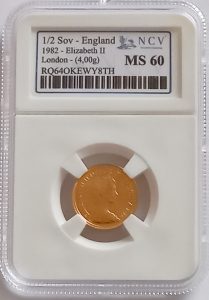
Design and Specifications
The Sovereign coin is widely known and celebrated for its exceptional design and craftsmanship. This coin weighs 7.98 grams (7.32 grams of pure gold), has a diameter of 22 mm, and is made of 22-carat gold. The design elements, which include the portrait of the reigning monarch on the obverse and St. George slaying the dragon on the reverse, are symbolic and have significant historical importance. The reverse iconic design of the Sovereign coin was created by the Italian engraver Benedetto Pistrucci. His design, which depicted St George (Patron Saint of England) and the dragon, was intended to make the coin as distinctive as possible.
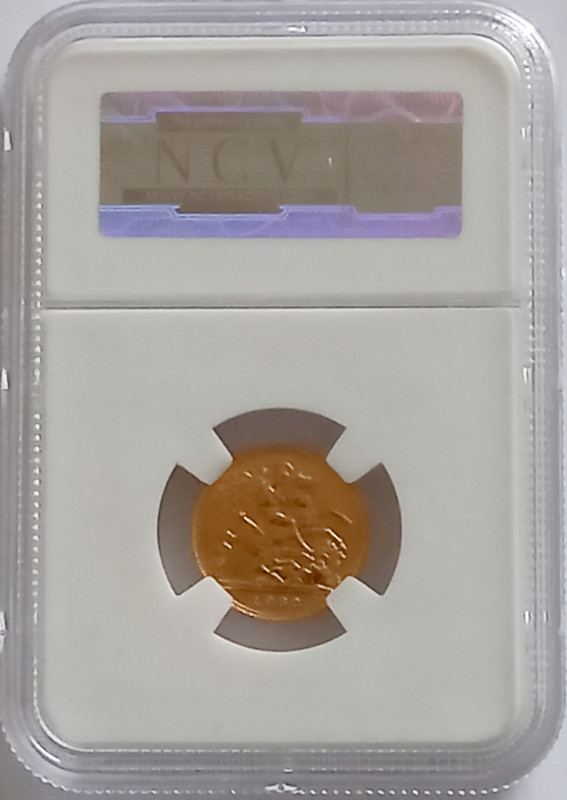
The British Sovereign coin has a reddish hue due to its composition. It is made of 0.2354 troy ounces of pure gold but not 100% pure. The coin has a purity of 91.7% and is mixed with copper or other metals, which gives it its characteristic reddish color. This mixture is called an alloy, and is used to make the coin more durable and resistant to wear.
Most valuable Sovereign coins
The value of Sovereign coins can vary greatly, depending on their age, rarity, and condition. Here are some of the most valuable Sovereign coins known to exist:
- 1953 Sovereign: The first sovereigns were minted after Queen Elizabeth II ascended to the throne in 1953. Only three proof coins and accompanying crowns, doubles, and half-sovereigns were produced. One set of these coins is present in the Royal Mint Museum, another is with the British Museum, and the final is in the Royal Collection. As no set has ever been sold, placing a value on them is impossible.
- 1819 Sovereign: During the reign of George III in 1819, a total of 3,574 sovereigns were produced. Although this was not the lowest mintage run, only ten examples of these sovereigns are known to exist today. Due to their extreme rarity, these 1819 sovereigns are sold at very high prices, even in poor condition. One of the finest examples of these sovereigns was sold for a whopping £186,000 (approximately $289,000) on May 8th, 2013, at Baldwin’s auctioneers.
- The Edward VIII Sovereign coins are a prime example of a limited production run, as the king was only on the throne for a short period in 1936. The mass minting of these coins was suspended before it even began in January 1937 due to the king’s abdication. As a result, only a few test coins were produced and are now considered rare and valuable.
- ‘Shield back’ designs have been used sparingly to celebrate jubilee years (such as 2002, 2012, and 2022). Due to their rarity and beautiful design, they are highly sought after, and their prices are pushed up.
That said, the prices of these coins can fluctuate based on the condition of the coin, the current gold price, and the demand among collectors.
Overdates
Overdates, more frequent in lower denominations, are not very common in sovereigns, mainly because the gold sovereign was considered the most important coin in the country. There are only three years for which overdates are known for British sovereigns. These years are 1843 over 1842, 1872 (Melbourne Mint) over 1871, and 1880 over 1870 with B.P., and 1880 over 1870 without B.P.*
* The initials “B.P.” that appear on Sovereign coins represent the name of Benedetto Pistrucci, who designed the St. George and dragon image on the reverse side of gold sovereigns. It is a common practice for coin designers or engravers to include their name or initials on the coins they design. The “B.P.” initials can also be found on some half sovereigns and crowns. The exergue, which is the part of the coin under the main design on the reverse, is the most common place to find the “B.P.” initials. However, on some earlier sovereigns, it can be found hidden in the ground below the broken spear or lance. On the laureate head sovereigns of George IV, the initials “B.P.” can also be found quite prominently under the portrait.
Minting Process
The sovereign coins were minted with advanced processes and techniques at various locations, including the Royal Mint in London and branch mints in Canada, Australia, India, and South Africa.
The minting process of the Sovereign coin is a precise and meticulous one. The Sovereign is the most tightly specified coin in the world, guaranteed to five decimal places. The modern minting process involves precise engraving techniques, focusing on high-speed production.
The Sovereign coin has a unique history associated with each mint that produced it. The mint mark, a letter symbolizing the city or country of origin, can be found on the coin’s reverse side. It is located on the exergue, between the design and date for Saint George and the Dragon sovereigns. This feature helps to distinguish the coins produced in London from those made in other branches of the Royal Mint:
- London, UK: The original location of the Royal Mint. Sovereigns minted here do not have a mint mark.
- Sydney, Melbourne, and Perth, Australia: The sovereigns issued in Australia initially carried a unique local design, but by 1887, all new sovereigns bore Pistrucci’s George and Dragon design. The mint marks for these locations are ‘S,‘ ‘M,’ and ‘P,’ respectively.
- Ottawa, Canada: The mint mark for this location is ‘C‘.
- Mumbai (Bombay), India: Sovereigns have been struck in India for the local market since 2013, in addition to the production in Britain by the Royal Mint. The mint mark for this location is ‘I.’ The Indian mint struck Sovereigns for only one year, making these coins highly sought-after by collectors. They minted 1,294,372 of these coins from August to December 1918, before shutting down in April 1919.
- Pretoria, South Africa: The mint mark for this location is ‘SA.’
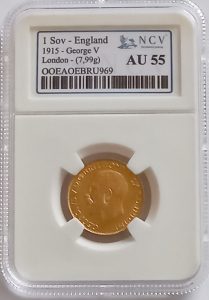
Sovereign coin as an investment
The gold sovereign is a particularly suitable currency for saving and investing in gold for several reasons, which are listed below:
- Historic Appeal: As we have seen, the Sovereign has a rich history dating back to 1489 under King Henry VII, which adds to its appeal.
- Easy to Trade: Its small size makes it easier to trade and more affordable than larger gold bars.
- Tax Exemptions: All British Sovereigns and Britannia coins minted after 1837 are exempt from Capital Gains Tax (CGT), making them a tax-efficient investment.
- Globally recognised: the sovereign is one of the most famous gold currencies in the world, which makes it easy to buy and sell as investors and savers around the world are familiar with it. Needless to say, that increases confidence in transactions.
However, conducting thorough research and carefully assessing your financial objectives before making any investment decisions related to Sovereign gold coins is crucial.
So much for our article on the Sovereign gold coin; we hope you enjoyed it. If you know someone who might be interested, don’t hesitate to share it. Thanks for following NCV’s blog!


